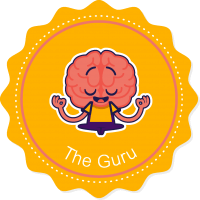Whilst every child’s needs will be different, the following general strategies can help support SEMH needs in the classroom.
Support transitions – To reduce uncertainty, prepare pupils for key transition points, making predictable changes to routines and environments. Autistic children and young people will often struggle with transitions – big or small.
Adapt your praise – Some children with SEMH needs find it difficult to accept praise, but it is important that they receive it. By getting to know them and their preferences you will be able to offer praise in a way that works for them.
Teach mindfulness – Many children struggle when managing stressful, unstructured, or high-sensory situations. Mindfulness exercises (such as meditations and breathing practices) can help children to become calmer, and more accepting and connected to the present.
Teach social and emotional skills – Schools should actively teach and embed opportunities for pupils to develop self-awareness, self-belief, resilience, planning, social skills, and emotional literacy.
Children with specific SEMH needs may need to be taught these skills in a more targeted, intensive, and explicit way, through one-to-one interventions or nurture groups.
Have a classroom worry box – Instead of having to hold on to a worry, children can physically remove it and put it into their classroom’s anonymous worry box. Releasing anxious thoughts can be a soothing experience. Fears/uncertainties can then be addressed.
Consider the classroom environment – you may need to make adaptations to help make it a calm, structured place. Consider seating arrangements, the sensory impact of the space, and try to include a calm area where a child can go if they need to.
Prepare self-soothe boxes – Self-soothe boxes are made by the child, and are filled with items which make them feel calm. This could, for example, include a photograph, a piece of material, a lavender bag, or a seashell. If a child begins to feel overwhelmed, they can then collect their box and spend some time looking at each of the objects they have included.
Get physical – evidence shows that physical activity can improve wellbeing. Include movement breaks in the day, use teaching resources that combine physical activity with other learning (such as BBC’s Super Movers).
Get outside – similarly getting into the open air can have a beneficial effect. When planning, consider if a portion of the lesson can be outside (art and science particularly lend themselves to this), or combine with regular physical activity such as the Daily Mile.

